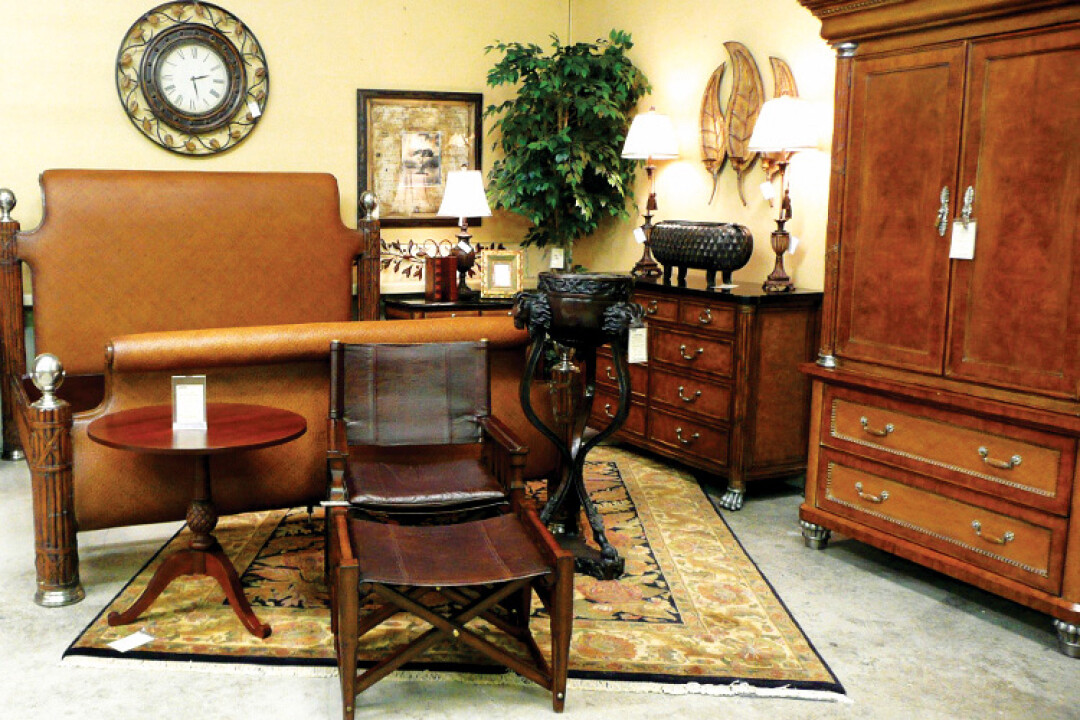Pro Tips: Resign to Consign
consignment sales can help you pass on antiques

Finding a new home for your long-cherished antiques and vintage goods can be difficult, even if you’ve been cherishing them from upstairs for years while they gather dust in your basement. Just when you think you’re ready to haul the hand-carved bed frame up and list it on your preferred online market, the task might begin to seem insurmountable when you realize this requires finding a buyer, coordinating a pick-up, and facing up to the impossible task of putting a price on a priceless item. It might be time to seek professional help.
Megan Glassbrenner has been in the business of helping people re-home their vintage furniture, decor, and more for four years through consignment sales at The Attic (2015 Fairfax St., Eau Claire). She provides services to downsizing empty-nesters, people who are moving, and those who just need to declutter their lives. She’s got plenty of great advice for new consigners.
But first things first: What is consignment?
Consignment is when you give an item to a store or salesperson to sell for you. You retain ownership of the object until it is sold, at which point you split the revenue from the sale with the outlet that sold it. When you sell an object on consignment, you benefit from having that object in a store space where people can stumble across it while browsing. The seller chooses a fair price, advertises the store and the product, stages it in an appealing way, and develops relationships with customers.
Can I sell on Consignment?
Every consignment shop has different policies and standards for what they will sell. Most stores only take items from smoke-free homes. Some only take objects from pet-free homes, while others will consider things on a case-by-case basis. Furniture should be sturdy, without damages that detract from the appearance and usability of the item. Different shops carry different styles of furniture and decor, so if one place won’t help you with a mid-century modern coffee table, another might. The best way to know if a shop will sell your item is to ask!
Organizing isn’t minimizing.
Glassbrenner considers herself a bit of a minimalist, and often browses the Internet for information on downsizing and minimalism. She finds so many people asking about the best storage and organizing techniques, containers, hacks, etc. “Organizing isn’t minimizing,” she said. “People are always trying to figure out how to control the chaos. There’s less chaos if there’s less stuff.”
Find creative ways to “keep” things.
“A lot of times people want to keep stuff not because they’re going to use it, but because they want to be able to look back at it,” Glassbrenner said. She suggests taking pictures of vintage toys, decor, and other objects that don’t have a place in your home, but still have memories or sentiment attached to them. “In a cliche way, it’ll last longer,” she said. “It’s not gonna take up space. It’s so easy.”
Don’t hold things for too long.
“The longer you hold an object, the more likely you are to keep it,” she cautions. It’s easy to pick something up and get caught up in the feel, the smell, the memories. She says the most important question you should ask yourself is, “Am I going to use this? Yes or no?”
Plan ahead.
If you’re purging your possessions in preparation for a move or other event, Glassbrenner advises starting early. “Don’t wait until the last minute,” she said. “It will take you sometimes double the time you think it will.”
Listen to your consigner.
The consigner draws upon knowledge of the product and of the market to determine what price an item will sell for. Glassbrenner often encounters people who are hesitant or unwilling to part with an item unless they get the price they expect. “It’s not worth anything until you get it on the market,” she counters. A good consigner will choose a price that will move the item and benefit the seller.
Don’t let your things own you.
Letting go of amazing antiques can be difficult, Glassbrenner acknowledges. But she encourages people to part with items that go unused or detract from their living space. She suggests people ask themselves: “Am I enjoying making this a livable space, or am I just letting all these things weigh me down just for the sake of having them?” Getting rid of unappreciated items will create room for things that light up your life.


